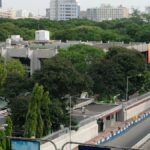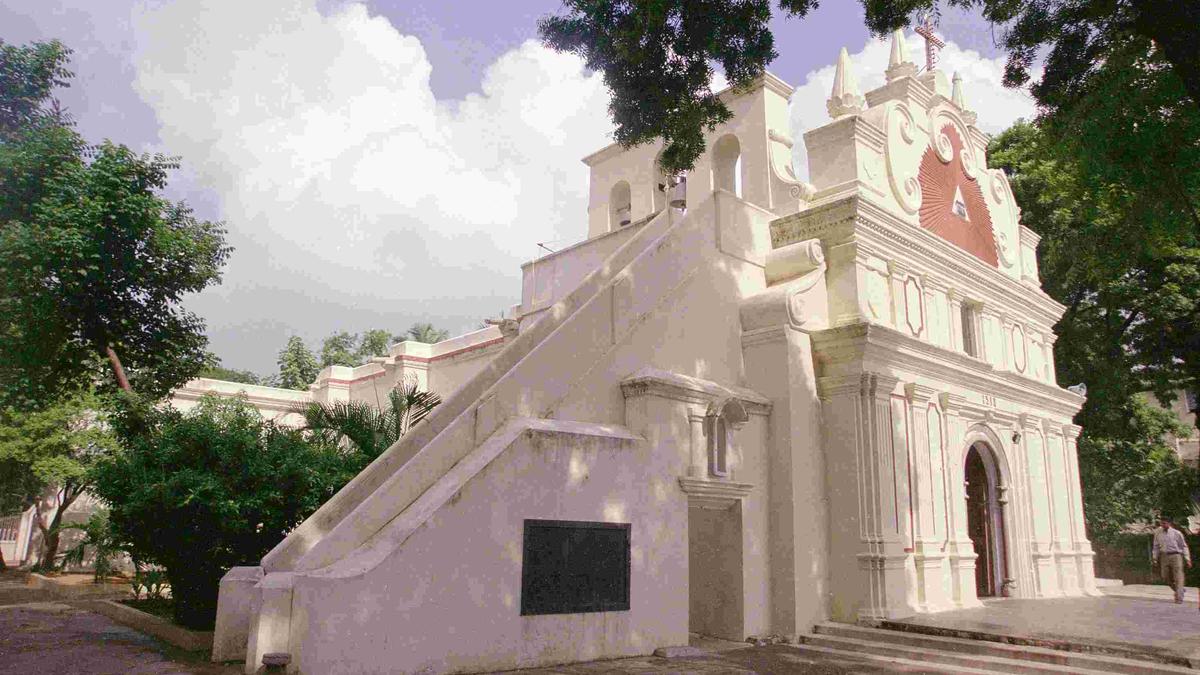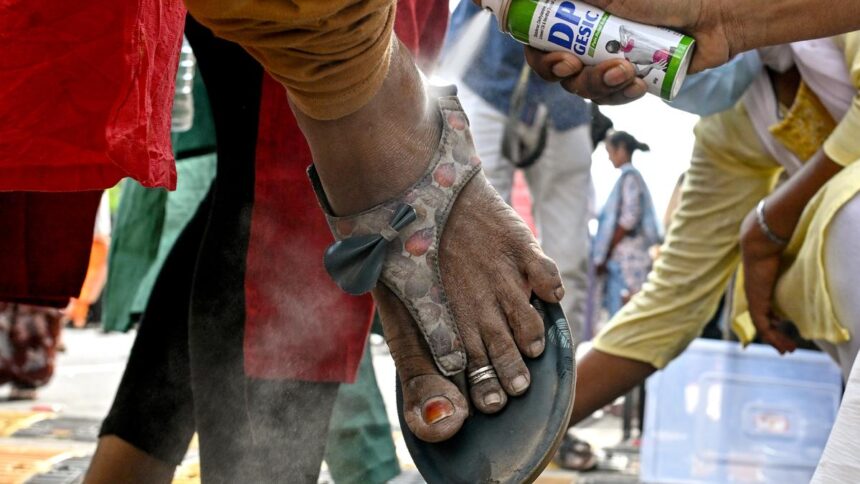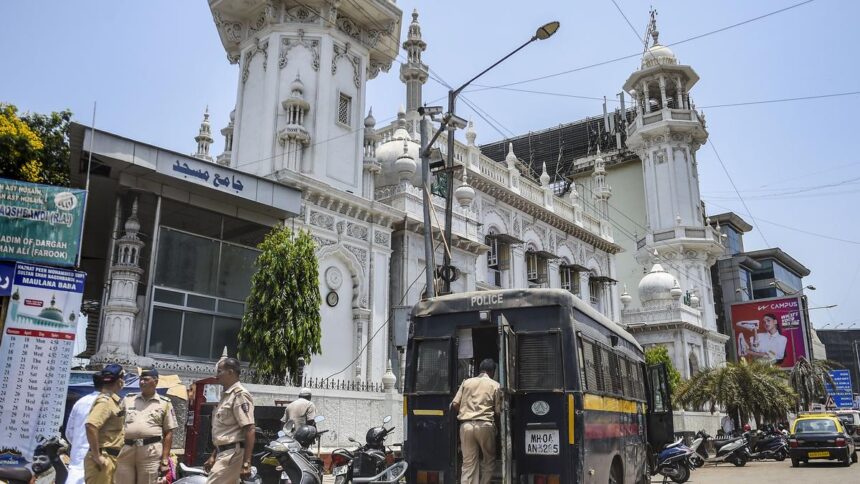
The Luz Church, also known as Kattu Koil, takes its Indian name from the fact that it was once in a dense forest. It still retains its baroque architecture.
| Photo Credit: The Hindu Archives
For over 300 years, i.e, between the Chola era of prosperity and the glory years of Vijayanagar, the Madras region seems not to have had many visitors from overseas. But by the 16th Century, the Portuguese were here and were the first among the significant colonial presences. While there is no doubt that it was trade that brought them to India, my contention is that it was the strong link with the legend of St. Thomas that drew them to Mylapore. Under them, the area proved a blueprint for colonial forts — a white town by the sea and a black one to the west. They called it San Thome, after the saint who brought them here.

The Portuguese were as inspired by evangelisation as they were by conquest, and so both flourished. There were as many as seven churches within the fort, and four outside of it. Today, among the former, we have the San Thome basilica (much reconstructed and bearing no trace of Portuguese architecture) and the Rosary Church as two survivors, with a third, St. Rita’s now part of the San Thome Matriculation School. Its façade remains unchanged. Surprisingly, all four churches outside the fort survived — St. Lazarus, Madre de Deus, Descanso, and Luz. Among these, the Luz Church, also known as Kattu Koil, takes its Indian name from the fact that it was once in a dense forest. It still retains its baroque architecture.
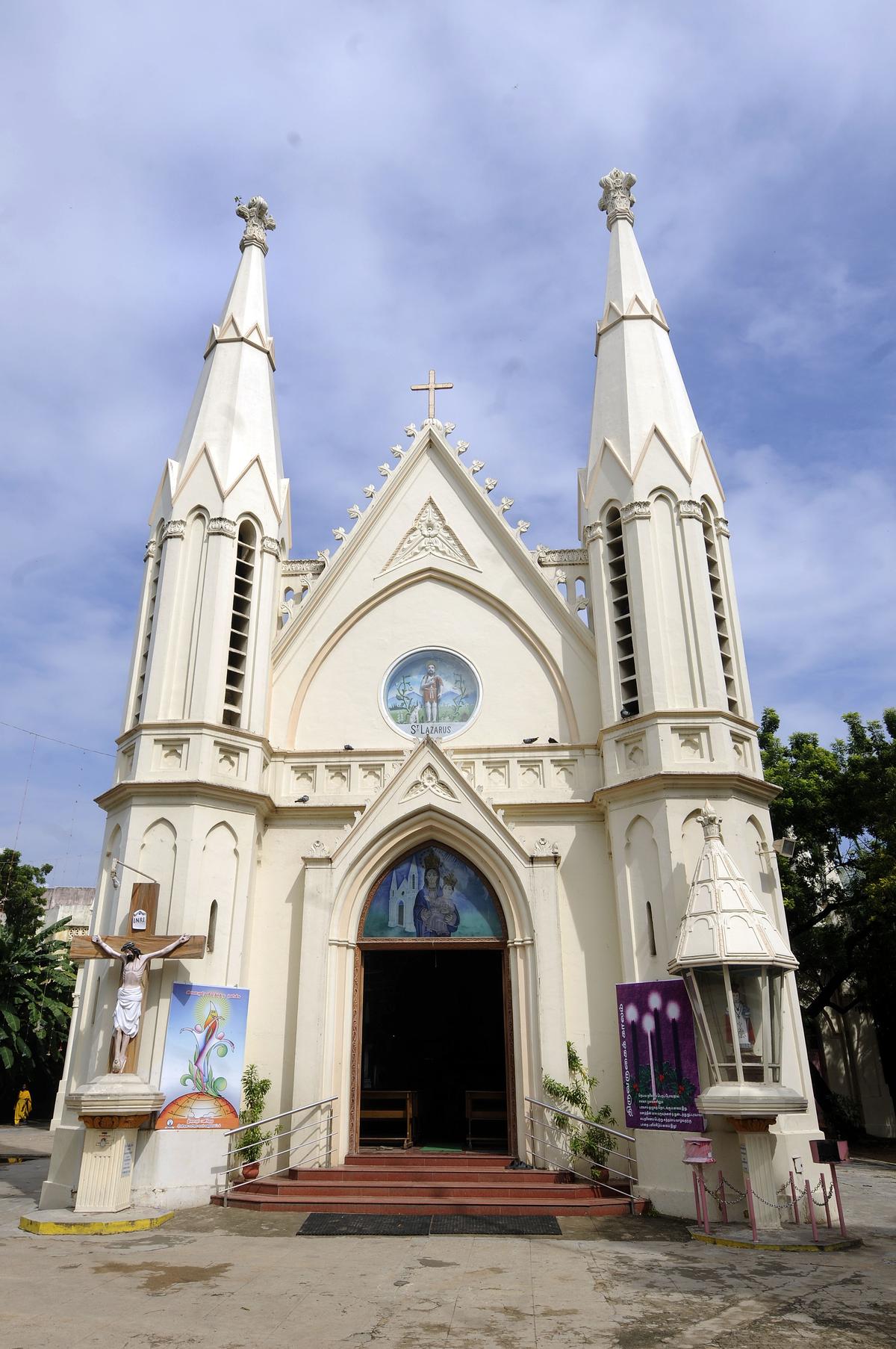
St Lazarus in R.A. Puram is one of the churches built by the Portuguese that still stands.
| Photo Credit:
The Hindu Archives
The flourishing of Christianity in San Thome meant Mylapore’s historic Kapaleeshwarar Temple waned and was eventually shifted. Certainly, relics of a temple emerged for long from where the basilica stands today. That temples in San Thome went through a rough patch is evident from an appeal made by the locals to Aliya Rama Raya, the powerful son-in-law of Krishna Deva Raya. But he took no action — the Vijayanagar rulers needed the Portuguese for their supply of firearms and horses.
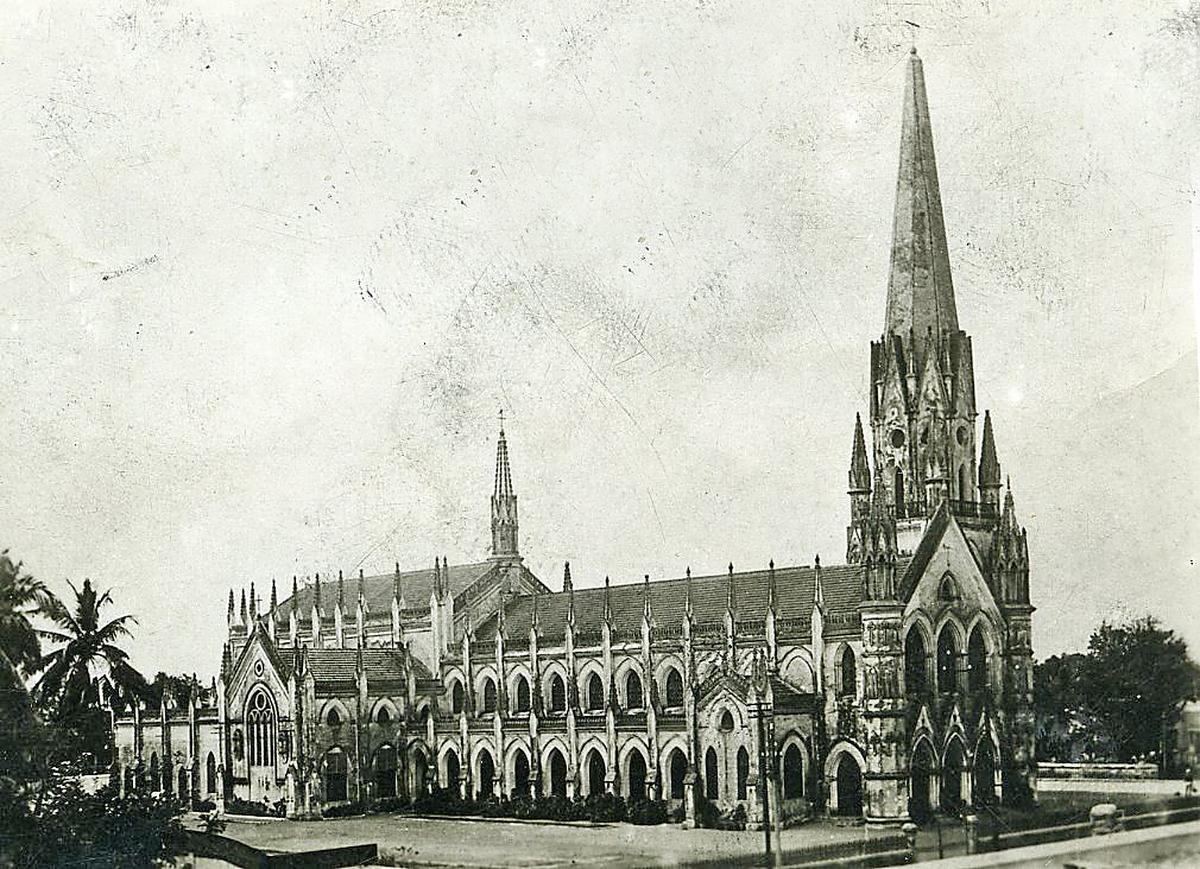
The Portuguese were as inspired by evangelisation as they were by conquest, and so both flourished. A view of the San Thome Cathedral Basilica Church in 1967.
| Photo Credit:
The Hindu Archives
The Portuguese were never great administrators and San Thome soon descended into chaos, thereby making the neighbouring Fort St. George more attractive to locals. The Dutch and the Golconda Sultanate combined to reduce San Thome in the late 17th Century and then the French too came in. Finally, it was the English, who had done nothing but watch till then, who gained the upper hand. By the 1750s, San Thome was with them, and they made quick work of demolishing its walls. What is mysterious is the way in which its harbour, historic Shah Bandar, vanished without a trace.
Architecture and street names
There were till recently plenty of Portuguese-style houses in the San Thome area. Street names still remain — Nimmo, Lynna Pereira (he was a purveyor of spirits), and DeMonte — all commemorate the Portuguese. And there are still many educational institutions here that owe their existence to the Catholic Church and its many denominations.

A legend of a mysterious light that guided storm-tossed sailors to safety inspired the Portuguese to build a church here, it was given the Portuguese word for light — Luz — as its name, and those in the Mylapore area at least must be using it on a daily basis without once pausing to think of how it became local coin. And Descanso, meaning ‘rest’, is Ilaipparral in Tamil. The church became Ilaippatriya Mada Kovil (St. Mary’s Road), which became Ellapatha Mada Kovil.
We still have some words that we owe to the Portuguese. Among these, istri for the act of pressing clothes and peepa for barrel are but two. The former is from the Portuguese estirar, meaning to stretch, while the latter is from pipes (pronounced peeps) — barrels that transported wine.
However, there was also a dark side to the Portuguese presence in Madras — they kidnapped locals and sold them off as slaves to the plantations across the world.

Published – August 22, 2025 06:00 am IST







